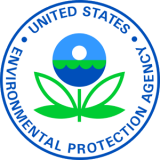EPA Announces $9.3 Million in Supplemental Funds to Clean Up and Reuse Brownfield Sites in Communities Across the U.S., Including Missouri
Environmental News
FOR IMMEDIATE RELEASE

“This Brownfields supplemental funding will provide additional resources to 24 communities with a proven track record of success so they can continue their progress in revitalizing their local economy and improving the health and wellbeing of their community,” said EPA Administrator Andrew Wheeler. “We are proud to report that a majority of communities receiving these supplemental funds have Opportunity Zones within their jurisdiction, which means we are reaching communities most in need.”
“Kansas City and St. Louis County, Missouri, are excellent candidates for Brownfields supplemental funding,” said EPA Region 7 Administrator Jim Gulliford. “Kansas City and St. Louis County will use these funds to assist some of the most disadvantaged communities within their jurisdiction by mitigating contamination to protect human health and the environment, making these properties ready for reuse, attracting public and private investment for redevelopment, and creating jobs.”
Recipients of EPA’s Brownfields RLF funding provide low-interest loans and sub-grants to carry out cleanup activities at brownfields sites. When loans are repaid, the loan amount is returned into the fund and re-lent to other borrowers, providing an ongoing source of capital within a community. To date, EPA’s RLF grantees across the country have completed 694 cleanups and attracted approximately 42,000 jobs and $8 billion in public and private funding.
A majority of the communities receiving supplemental funds have census tracks designated as federal Opportunity Zones within their jurisdiction. An Opportunity Zone is an economically-distressed community where new investment, under certain conditions, may be eligible for preferential tax treatment.
The 24 communities selected for FY19 RLF supplemental funding are:
|
State |
Cooperative Agreement Recipient Name |
Amount |
|
GA |
Atlanta, City of |
$400,000.00 |
|
IL |
Rockford, City of |
$400,000.00 |
|
IN |
Indiana Finance Authority |
$400,000.00 |
|
KY |
Louisville-Jefferson County |
$400,000.00 |
|
LA |
South Central Planning and Development Commission |
$400,000.00 |
|
MA |
Berkshire Regional Planning Commission |
$373,170.00 |
|
MA |
Worcester, City of |
$373,170.00 |
|
ME |
Androscoggin Valley Council of Governments |
$373,170.00 |
|
ME |
Maine Department of Economic and Community Development |
$400,000.00 |
|
ME |
Southern Maine Planning and Development Commission |
$373,170.00 |
|
MI |
Downriver Community Conference |
$400,000.00 |
|
MO |
Kansas City, City of |
$400,000.00 |
|
MO |
Land Clearance and Redevelopment Authority of St. Louis County |
$400,000.00 |
|
MT |
Snowy Mountain Development Corporation |
$400,000.00 |
|
NC |
Wilson, City of |
$400,000.00 |
|
NM |
New Mexico Environment Department |
$400,000.00 |
|
NY |
Niagara County Brownfield Development Corporation |
$400,000.00 |
|
OK |
Oklahoma Department of Environmental Quality |
$400,000.00 |
|
OK |
Tulsa, City of |
$373,170.00 |
|
TX |
Texarkana, City of |
$400,000.00 |
|
UT |
Salt Lake County Economic Development |
$400,000.00 |
|
VT |
Northwest Region Planning Commission |
$350,000.00 |
|
VT |
Vermont Agency of Commerce and Community Development |
$400,000.00 |
|
WI |
Racine, City of |
$373,170.00 |
Background
A brownfield is a property for which the expansion, redevelopment or reuse may be complicated by the presence or potential presence of a hazardous substance, pollutant or contaminant. There are estimated to be more than 450,000 brownfields in the U.S.
Grants awarded by EPA’s Brownfield Program provide communities across the country with an opportunity to transform contaminated sites into community assets that attract jobs and achieve broader economic development outcomes, while taking advantage of existing infrastructure. For example, Brownfields grants have been shown to:
- Increase local tax revenue: A study of 48 brownfields sites found that an estimated $29 million to $97 million in additional local tax revenue was generated in a single year after cleanup. This is two to seven times more than the $12.4 million EPA contributed to the cleanup of these sites.
- Increase residential property values: Another study found that property values of homes near revitalized brownfields sites increased between 5% and 15% following cleanup.
As of May 2019, under the EPA Brownfields Program, 30,153 properties have been assessed and 86,131 acres of idle land have been made ready for productive use. In addition, communities have been able to use Brownfields grants to attract 150,120 jobs and more than $28 billion of public and private funding.
The 2019 National Brownfields Training Conference will be held December 11-13 in Los Angeles, California. Offered every two years, this conference is the largest gathering of stakeholders focused on cleaning up and reusing formerly utilized commercial and industrial properties. EPA cosponsors this event with the International City/County Management Association (ICMA).
- Learn more about EPA’s Brownfields Program
- Learn more about Brownfields Revolving Loan Fund Grants
- Learn more about the 2019 National Brownfields Training Conference
# # #
Learn more about EPA Region 7
View all Region 7 news releases
Connect with EPA Region 7 on Facebook: www.facebook.com/eparegion7
Follow us on Twitter: @EPARegion7
